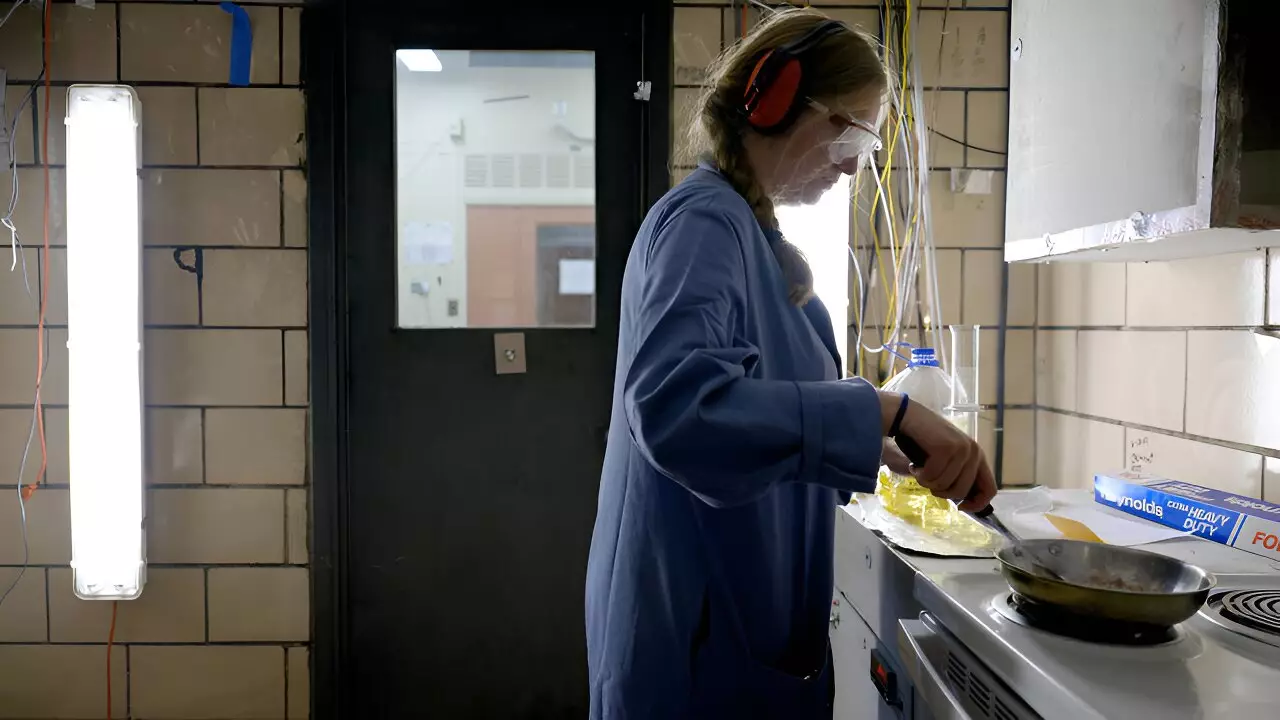In the realm of fire safety, few household items are as vital yet often overlooked as smoke detectors. These devices, designed primarily to save lives and protect property, are frequently derailed by one vexing issue: nuisance alarms. A situation many homeowners can relate to, these alarms often sound inappropriately during mundane activities like cooking or even showering. Although they serve a critical function in alerting residents to dangers, persistent false alarms can lead individuals to disable them entirely, significantly jeopardizing fire safety.
NIST researcher Amy Mensch published a study that brings to light the challenges surrounding modern smoke alarms. With the rise of various home materials and cooking methods, the blending of normal household activities with the need for vigilant fire detection has become more complicated. While alarms are carefully calibrated to sense fires, their sensitivity can lead to misfires, prompting concerns from experts who are aware of the issues that arise when alarms fail to function effectively.
Smoke alarm technology has evolved significantly since its introduction into homes in the 1970s. The National Institute of Standards and Technology (NIST), alongside UL Standards and Engagement, has played a vital role in refining these devices. The shift from an era where only 10% of households had smoke detectors to a time when over 95% are equipped with them marks a monumental success in fire safety advocacy. Nevertheless, as home materials evolve, so too must safety standards.
The newest revisions in this arena, particularly the eighth edition of the UL 217 standard, have made strides in addressing the nuisances associated with smoke alarms. These changes are informed by advancements in home furnishings; modern materials, such as polyurethane foam, can ignite more quickly compared to those used in previous standards, representing a paradigm shift in residential fire hazards. The updated regulations focus on ensuring that all types of alarms, whether photoelectric or ionization-based, are proficient in detecting both flaming and smoldering fires. This ensures comprehensive safety coverage without overwhelming residents with alarm fatigue.
Understanding the importance of both fire detection and the reduction of false alarms, the NIST team has implemented novel testing methods. The introduction of standardized tests, like the hamburger patties trial, exemplifies a creative yet pragmatic approach to smoke alarm evaluation. The ability of smoke alarms to discern genuine danger from commonplace activities is paramount in achieving a balance between alertness and annoyance.
In experiments conducted at the NIST kitchen fire lab, researchers evaluated newly manufactured alarms against their predecessors, simulating various cooking scenarios. Surprisingly, the results indicated that the latest models performed similarly to older units concerning nuisance alarms. This mixed outcome hints that while the newer alarms are theoretically designed to reduce false alarms, practical application may yield inconsistent results.
This raises questions about the effectiveness of merely updating device standards without ensuring practical implementations that mitigate nuisance triggers in everyday settings.
Practical Advice for Homeowners
For homeowners grappling with nuisance alarms, there are actionable steps to alleviate the issue. Strategically placing smoke detectors away from cooking areas, maintaining good ventilation, and utilizing “hush buttons” are practical solutions. Moreover, investing in modern kitchen appliances may inadvertently reduce the risk of alarm triggers. Improved stove technology may help limit high-temperature incidents, suggesting that advances in appliance standards could also contribute positively to home safety.
Despite the potential drawbacks in adopting new forms of technology so inherent in human nature, expectations must be tempered. Manufacturers can only sell what they produce, and given that the transition to updated smoke alarms will take years, reliance on outdated technologies remains prevalent in many households.
As we draw upon the groundbreaking research from NIST, it is vital to embrace a forward-thinking mindset towards fire safety. Enhancements in smoke detector technology underscore the need for constant innovation in response to evolving household conditions and materials. The altered regulatory framework represented in UL 217’s eighth edition signifies a commitment to meeting modern challenges while sustaining the primary goal of saving lives.
In the meantime, awareness and proactive measures from homeowners can serve to bridge the gap between safety and everyday living. In a landscape where technological advancement is continually intertwined with user experience, tempering expectations and promoting education will go a long way in safeguarding our homes. Reforming fire safety is not merely about upgrading devices; it’s about fostering a culture of safety that harmonizes with contemporary living practices.


Leave a Reply